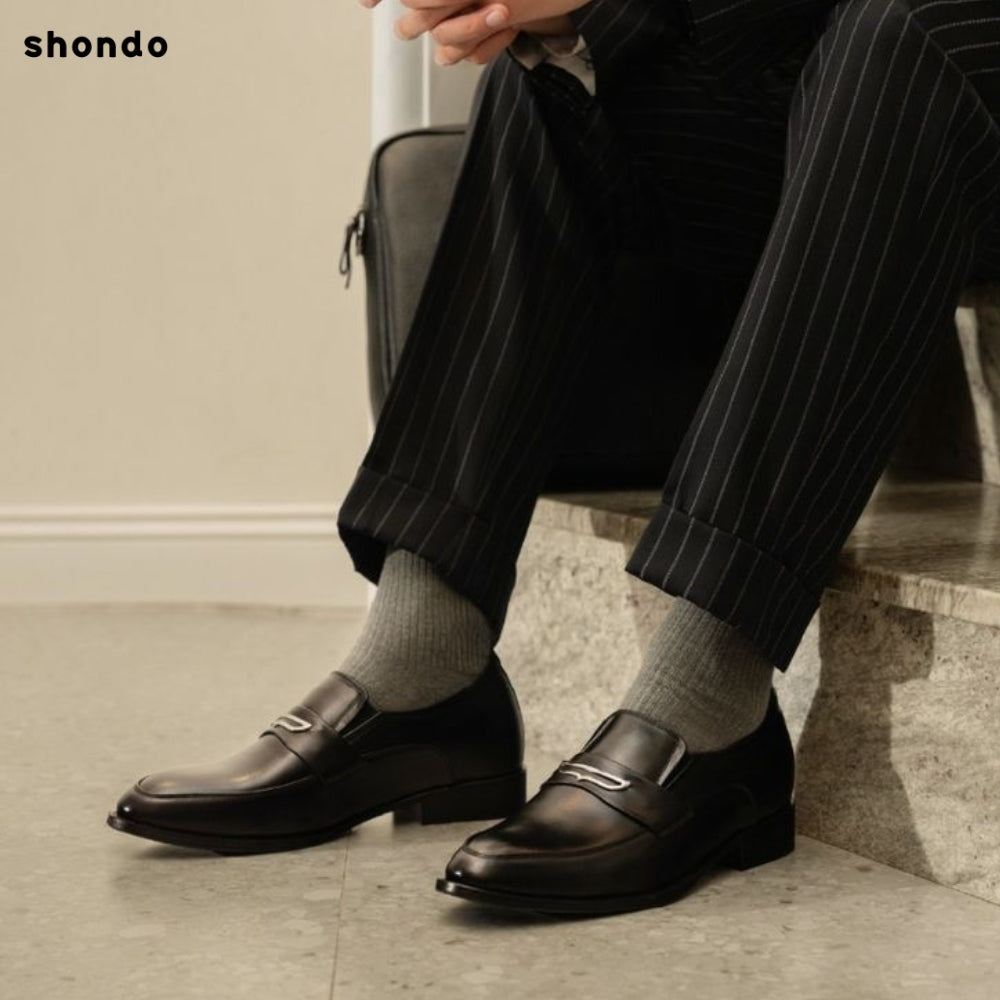Sometimes we encounter the ironic situation when our favorite shoes are larger than our feet. So is there any way to fix shoes that are 1 size larger ? Don't worry, Shondo will bring you many effective solutions through the article below.
1. Should I wear shoes one size larger?
Wearing shoes that are 1 size larger seems harmless, many people even think that this brings comfort and ease to the feet, especially when having to move a lot. But in reality, wearing shoes that are too large has more potential risks than you think.
- False Comfort : The initial comfort of wearing loose shoes is only temporary. As you move around, your feet will not have a solid support and will easily slide back and forth inside the shoe. This makes walking difficult, unstable and requires a lot of effort.
- Impact on gait: When wearing loose shoes, you tend to grip your toes to keep the shoes from slipping off your feet. This over time makes you walk unnaturally, making you more likely to stumble and lose your balance. Furthermore, flexing your toes can cause pain and deformity.
- Risk of injury: Loose shoes do not provide secure support for the foot. This increases the risk of sprains and strains, especially when you move quickly or run on uneven terrain.
- Other problems arise: The constant friction between the skin of the feet and the shoes will cause blisters, even dermatitis. In addition, it also creates conditions for sweat to accumulate, creating a humid environment, favorable for bacteria and fungi to grow, causing foot odor and skin diseases.
In general, wearing shoes that are one size too big is not the best option. Instead of trying to endure it, you should find a way to fix it or choose a new pair of shoes that better fit your foot size.
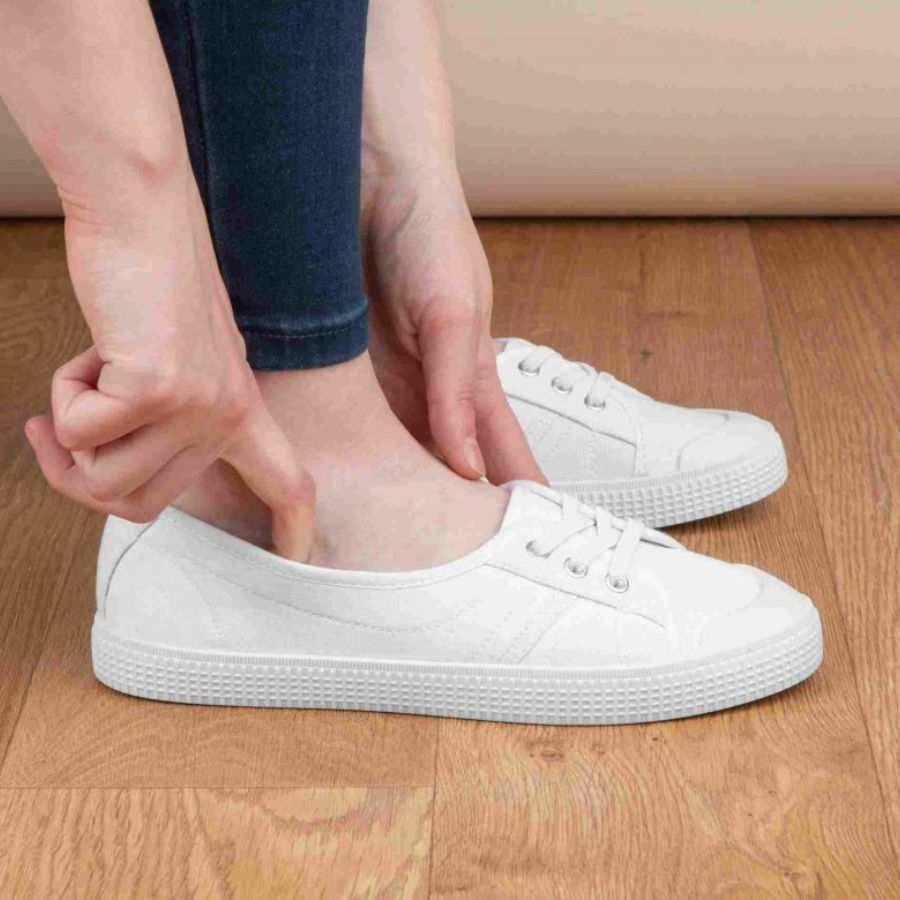
2. Harmful effects of wearing shoes that are 1 size too big
Wearing shoes that are one size too big not only causes discomfort and loss of confidence, but also poses many potential risks to the health of your feet and the entire body. Below are the specific harmful effects that you need to be aware of.
2.1 Effects on bone and joint structure
When wearing loose shoes, the feet are not properly supported, leading to uneven pressure distribution on the joints. This condition, if prolonged, can cause bone and joint problems such as:
- Heel pain: The heel is the part that bears the most force when moving. Loose shoes make the heel unstable, easy to slip, leading to pain and Achilles tendonitis.
- Ankle pain: The ankle joint has to work harder to maintain balance. This will eventually cause ankle arthritis.
- Knee pain: Loose shoes also cause incorrect walking posture, putting pressure on the knees, leading to knee osteoarthritis.
- Back pain: When posture is a problem for a long time, the spine is also affected, leading to back pain and scoliosis.
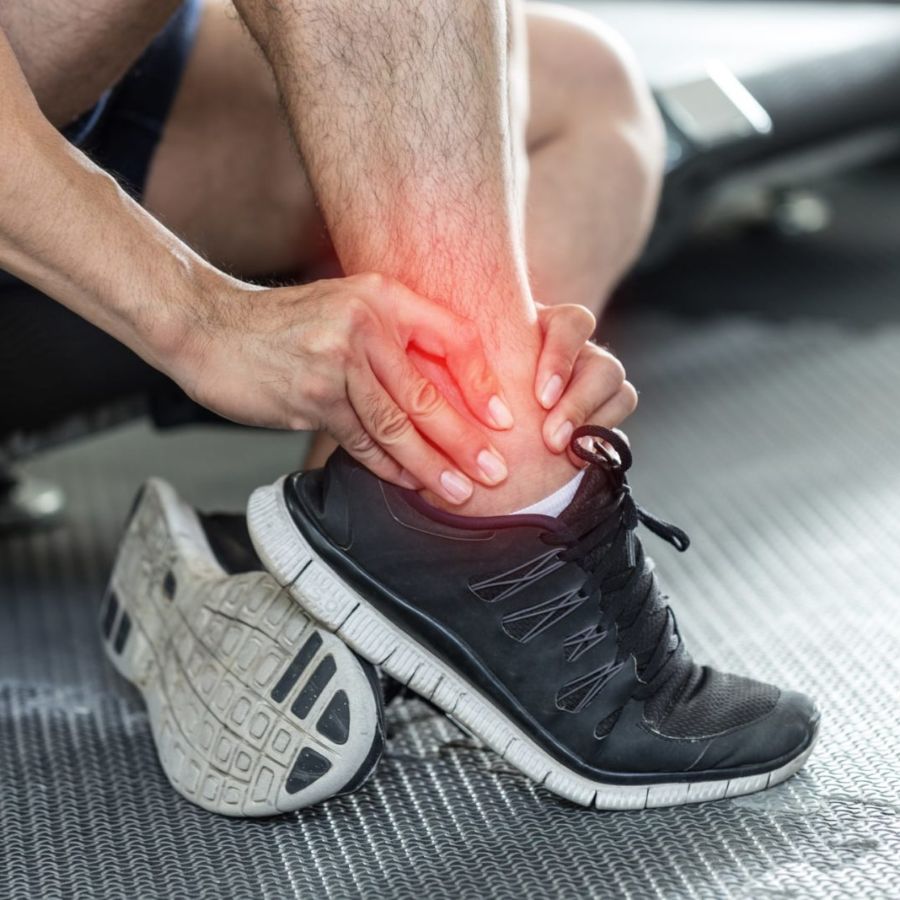
2.2 Causes skin problems
It is the constant collision between the skin of the feet and the surface of the shoe that causes skin problems such as:
- Blisters: When the feet walk a lot, the skin of the feet will rub constantly, causing painful cracks.
- Calluses: Pressure applied to certain areas of skin over a long period of time can cause the skin to thicken, forming calluses.
- Dermatitis: Open wounds caused by blisters, if not cleaned properly, can easily become infected and lead to necrosis.

2.3 Psychological impact
It seems unlikely, but this problem will make us lose confidence, making us feel anxious and uncomfortable in our daily work.
Besides, when facing many people at important parties, we will always feel afraid that others will see us wearing oversized shoes. This will definitely make you look worse, losing points immediately with the other person.
It can be seen that wearing shoes that are 1 size too big is not only an aesthetic issue but also has many potential health risks. Therefore, you should choose shoes that fit your foot size to ensure comfort and safety for yourself.
 >>>See more: How to fix wide sandal straps simply and effectively at home.
>>>See more: How to fix wide sandal straps simply and effectively at home.
3. TOP 6 simple ways to fix shoes that are 1 size too big at home
When you accidentally buy a pair of shoes that are too big, don’t throw them away. There are many simple ways to fix shoes that are one size too big that we can apply right at home. Here are the 6 most common methods:
3.1 Choose thicker socks
This is the simplest and quickest way to fix the situation. Thick socks help fill the space inside, creating a more snug and hugging feeling.
We can refer to sports socks, socks with thick padding in the heel and toe. Limit the use of thin leather socks because they are not effective in this case.
- Pros: This is a quick, easy fix. Thick socks not only help your shoes fit better, but they also protect your feet from rubbing against your shoes, reducing the risk of blisters.
- Disadvantages: Only suitable for moderately wide shoes. If the shoes are too wide, wearing thick socks will not completely fix it. Moreover, if used for a long time, especially in the summer, it will cause stuffy feet, sweat and create an unpleasant smell.

3.2 Use of filler paper
Stuffing paper is an easy-to-find material that can help you overcome this situation quite well. Try taking newspaper or clean toilet paper, crumpling it up and stuffing it into the toe of your shoe. Then adjust the amount of paper to fit comfortably and you’re done.
- Pros: This is a great way to make adjustments. Not only does the padding help the shoe fit better, it also helps it retain its shape longer.
- Disadvantages: The paper can shift during transportation, causing discomfort. Furthermore, the padding paper will easily disintegrate and become unusable when exposed to rain or water.

3.3 Fix by using thicker insoles
Using insoles is the next way to fix shoes that are 1 size too big that we should think about. You should choose a type with moderate thickness and good sweat absorption such as foam, gel,...
- Advantages: Insoles not only help shoes fit better, but also increase comfort and reduce pressure on the feet. They also help absorb sweat and prevent foot odor.
- Cons: Some insoles can make your feet feel hot. Choosing the wrong type can make you feel uncomfortable.

3.4 Consider a specialized ankle pad
Ankle pads are an effective solution for shoes that are too wide at the heel. Usually, they are made from soft materials such as silicon, gel,... shaped to hug the part to help fill the remaining gap.
- Advantages: Overcome the problem of heel slipping when wearing wide shoes, providing a feeling of stability and safety when moving
- Disadvantages: Sometimes it feels uncomfortable if we choose the wrong type. In addition, this method only works on the heel, not other areas.
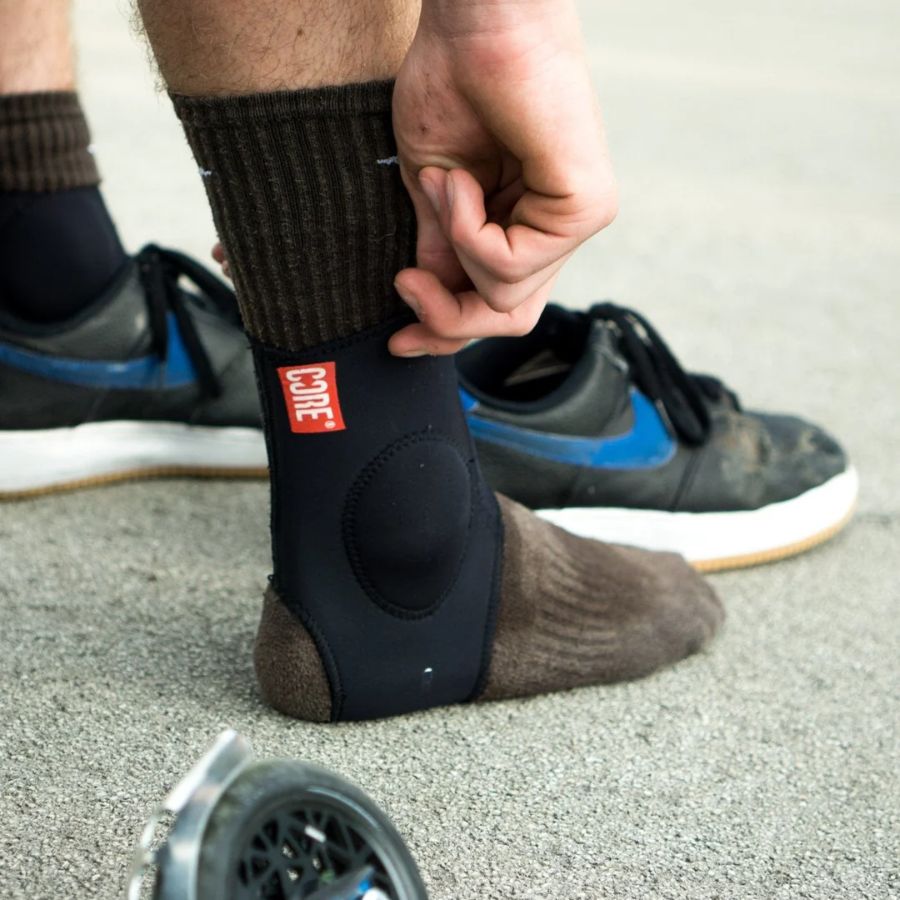
3.5 Choosing the right heel cushion
Heel pads are small accessories that are glued to the heel, helping to fill the gap and create a soft feeling for the heel.
- Advantages: Corrects heel slippage. Heel cushions also help protect the skin of the foot from friction with the shoe, minimizing scratches.
- Disadvantages: Peeling occurs after a period of use.
3.6 Foot patch
Arch support is an effective solution for shoes that are one size too big for arches. They provide better support for the foot, reducing pressure on the body.
- Advantages: Helps reduce foot pain, especially for people with flat feet.
- Disadvantages: Sometimes users are annoyed by it and cannot use it in other locations.

4. Important notes when fixing loose shoes
After trying the above methods to fix shoes that are 1 size too big , you need to pay attention to a few more important points to ensure effectiveness.
4.1 Check the fit
After applying the remedies, try walking for a few minutes to feel the width and tightness. Pay special attention to areas such as the toes, heels, soles and insteps. Specifically:
- Shoe tip: Toes should have enough room to move freely, without being pinched or tight.
- Heel: The heel must fit tightly into the shoe and not slip out when moving.
- Sole of the foot: Must be well supported, no feeling of emptiness or pain.
- Instep: No compression, tightness or numbness in the foot.
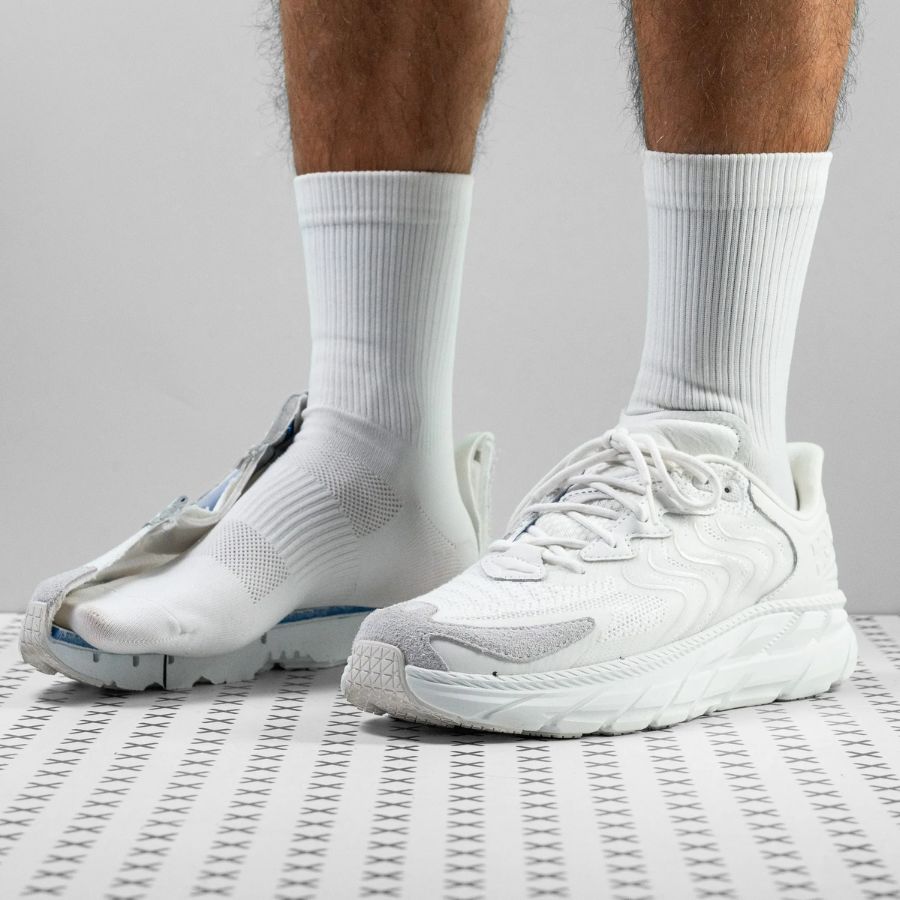
4.2 Do not abuse
Fixing shoes that are one size too big is only a temporary solution. If this happens frequently, we should consider getting a new pair of shoes with the correct size.
Experts and shoe enthusiasts do not appreciate this problem. Wearing loose shoes only brings inconvenience and directly affects our health.
4.3 Flexible self-adjustment
Of course, everyone has a different foot shape, so there is no one-size-fits-all solution to a shoe that is too big. We have to experiment and constantly adjust to find the method that works best for us.
The process is not difficult and does not take much time but requires patience and meticulousness. Please apply and consider the above notes to ensure effectiveness and comfort when doing it.
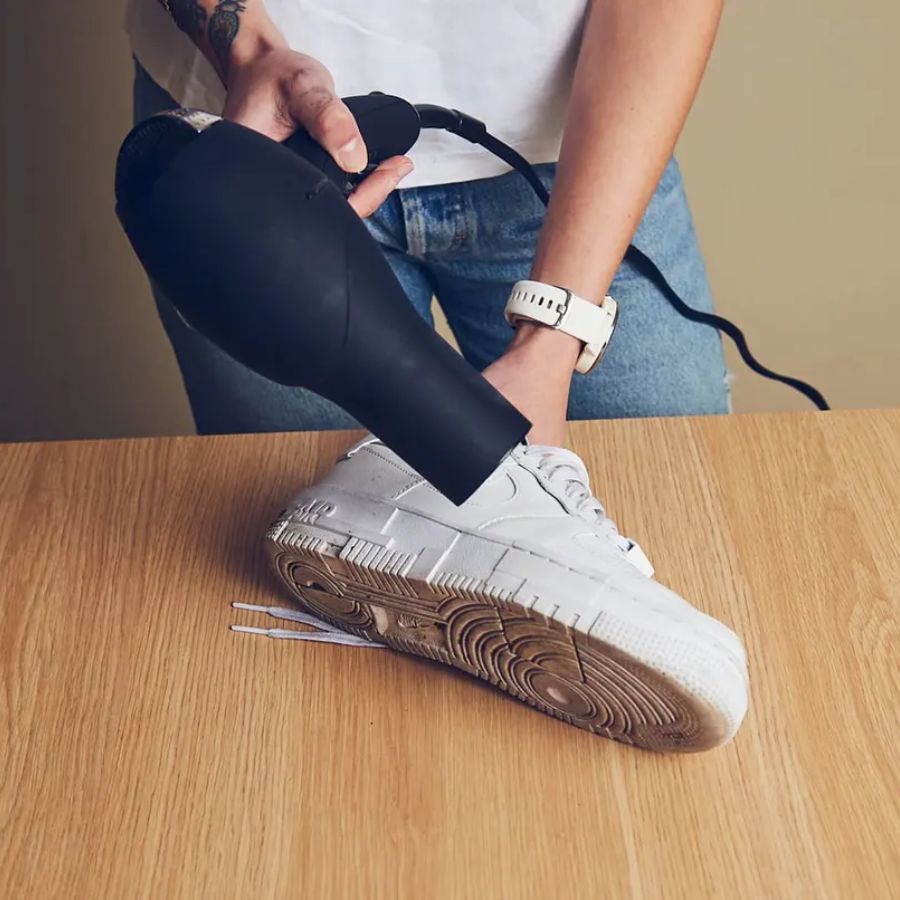
5. How to buy shoes that are not 1 size too big
To avoid the headache of trying to fix shoes that are one size too big, it is important to choose the right fit from the start. Here are a few tips to help you buy the right size:
5.1 Choose the correct length measurement method
Measuring your foot length accurately is the first and most important step to choosing the appropriate shoe size. Nowadays, many people make mistakes when measuring their foot length, leading to choosing the wrong shoe size.
Everyone should follow these steps:
- Prepare A4 paper, pen and ruler.
- Place your foot on the paper so that your heel and toes are completely covered by the paper.
- Use a pen to mark the starting and ending points of the foot.
- Take a ruler and measure the distance at the marked point.
- Record the measurement and add 0.5 - 1cm to get the most accurate foot length.
-
Note:
- Measure both feet as they may not be the same size and choose the size according to the larger foot.
- If you regularly wear socks, take them off before measuring for accurate results.
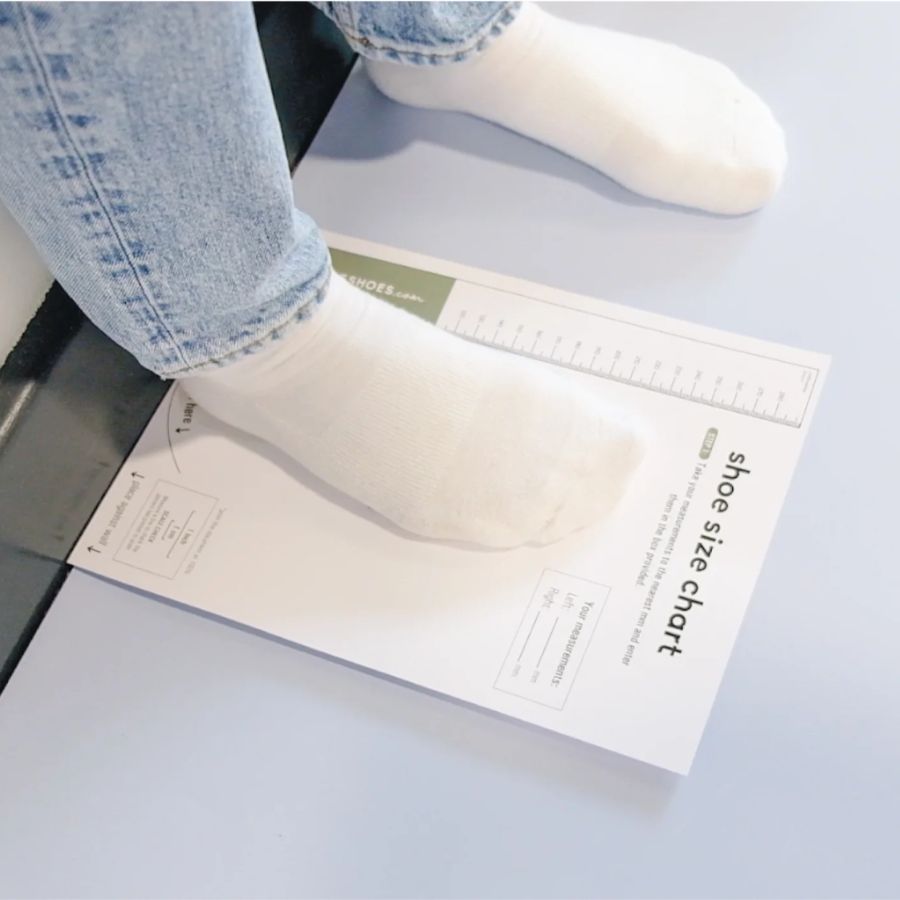
5.2 Try on shoes in the evening
Feet tend to be larger at night due to the expansion of blood vessels after a long day of activity. Therefore, trying on shoes in the evening will help you choose the most suitable shoe size, avoiding the situation of shoes being too tight when worn during the day.
Besides, we should not be too hasty when trying on shoes. Instead, take time to walk around the store to slowly feel the width, tightness or whether the toe is pinched.
5.3 Refer to the standard shoe size chart
Surely each shoe brand will have its own shoe size chart . After knowing how many centimeters your feet are, you should refer to the size chart of the brand you intend to buy.
The best way is to ask for help from consultants. Because they are the most knowledgeable and experienced in choosing shoes.

6. Conclusion
How to fix shoes that are 1 size too big is no longer difficult with the simple but extremely effective methods that the article has shared. Always listen to your feet and do not hesitate to experiment to find the best solution.
Related Articles

Nếu bạn đã và đang sở hữu cho mình đôi giày ballet sneaker nhưng vẫn chưa biết outfit nào phù hợp. Xem ngay bài viết này với 5 cách phối đồ với giày ballet sneaker đẹp không có điểm trừ cùng Shondo...

Squid Game 3 chính thức khuấy đảo trên màn ảnh, bạn đã sẵn sàng ngồi liền 6 tập để xem cuộc chiến sinh tồn lần cuối của Gi-Hun chưa? Dưới đây là combo cuối tuần “chuẩn sinh tồn hiện đại” mà Shondo ...

Phong cách Retro là gì mà được nhiều người săn đón như vậy? Cùng Shondo tìm hiểu qua bài viết sau đây để biết thêm nhiều điều thú vị từ điểm đặc trưng cho đến cách phối đồ như thế nào là chuẩn nhé....

Một trong những trào lưu nổi bật gây sốt trên các cộng đồng yêu thời trang chính là phong cách Maillard. Nhưng điều gì khiến chúng lại có sức hút lớn đến như vậy? Shondo sẽ giúp bạn hiểu rõ hơn về...

Áo Polo nữ - item nghe thì tưởng già nhưng thực ra lại đang quay trở lại mạnh mẽ. Từ sân golf đến sân trường, từ văn phòng đến quán cafe, chiếc áo đơn giản với cổ bẻ đặc trưng này bỗng trở nên đa n...
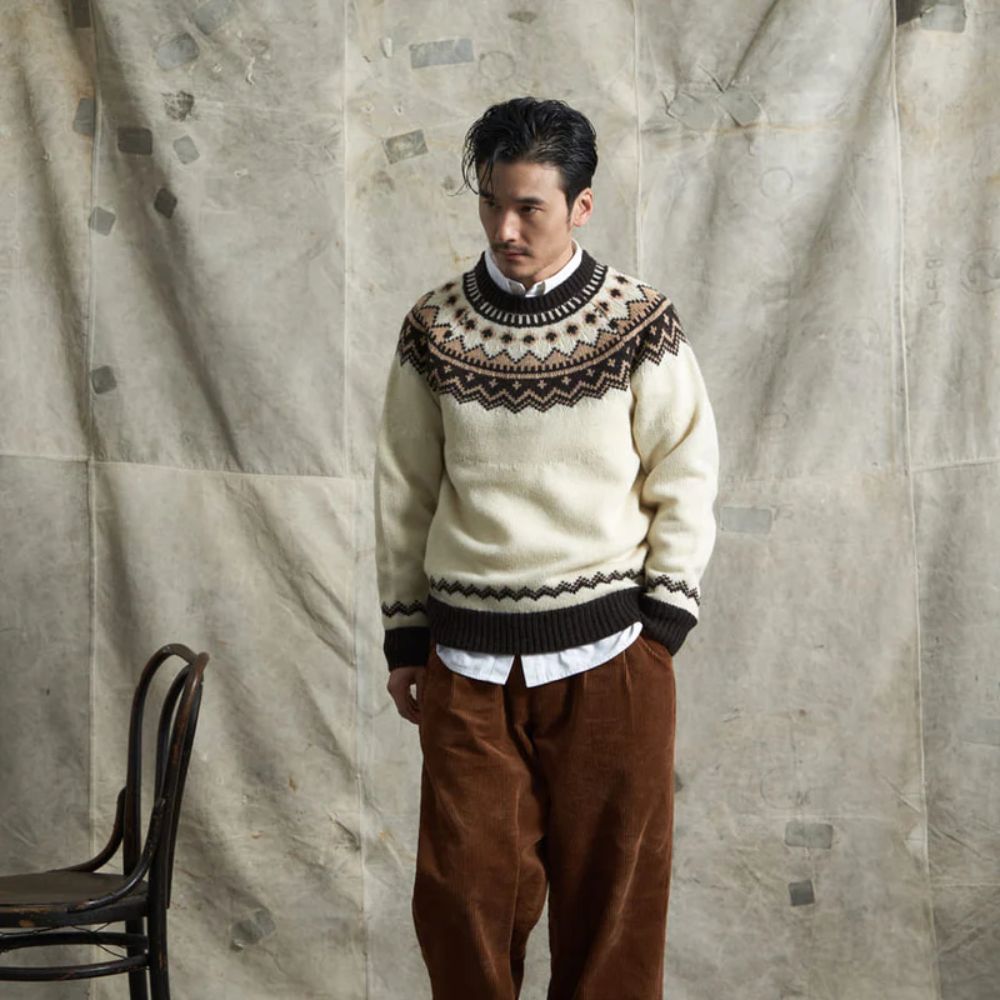
Phối đồ Vintage trong giới thời trang mang đến những nét độc đáo rất riêng. Phong cách này trở thành xu hướng phổ biến không chỉ ở nữ mà còn xuất hiện nhiều ở nam giới. Shondo sẽ cho bạn thấy điều ...

